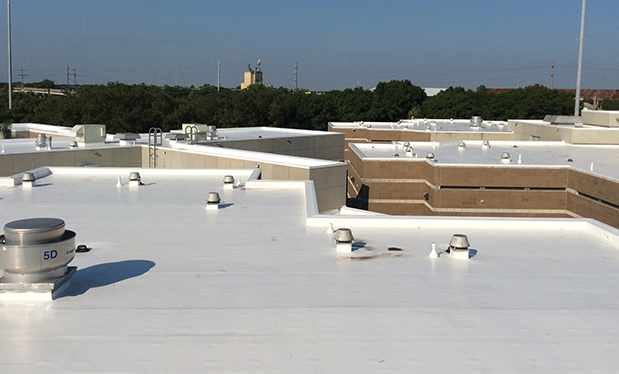OSHA removes worker deaths from home page
The Occupational Safety and Health Administration (OSHA) removed data regarding workplace deaths from its website's home page, www.osha.gov, Aug. 25 and changed its policy to disclose fewer fatal accidents in the future.
During the past few years, OSHA has maintained a running list of workers killed on the job—including the date, name and cause of death—near the top of its home page. The list included every worker death reported to OSHA regardless of whether the company was issued a citation.
On Aug. 25, the box on the home page was removed and replaced with information about how companies can voluntarily cooperate with OSHA to reduce safety risks. The information previously was available, but now it is displayed more prominently.
The new fatality list is located on an internal page of OSHA's website and does not include incidents where a worker was killed if the company was not cited for violations. The change immediately caught the attention of worker advocates, who accused the Trump administration of restricting access to information that could save lives.
The change could leave about 20 percent of worker deaths off the log, says Debbie Berkowitz, an adviser at OSHA during the Obama administration and currently a senior fellow at the National Employment Law Project.
"It's a conscious decision to bury the fact that workers are getting killed on the job," Berkowitz says. "That is totally what it is, so that [Labor Secretary Alexander] Acosta can say: 'Hey, industry is doing a great job and we're going to help them.'"
Labor Department Spokeswoman Mandy Kraft said in an email the purpose of the change is to make public data more accurate. She also said it would respect "the privacy of the victims' surviving family members and loved ones."
"The previous listings included fatal incidents that were outside federal OSHA jurisdiction, not work-related, or the employer was not cited for a violation related to the incident," Kraft said. "We are continuing to review all of the data to ensure it is accurate and useful to our stakeholders.
"We hope that a greater emphasis on the hazards will help employers and employees better understand how and why these incidents occurred, and take the necessary steps to prevent the loss of life at their own workplace," she continued.
To view OSHA's Fatality Inspection Data, visit www.osha.gov/dep/fatcat/dep_fatcat.html.
OSHA extends compliance deadline
On Aug. 30, the Occupational Safety and Health Administration (OSHA) issued a Notice of Proposed Rulemaking to extend employers' responsibility to ensure crane operator competency and enforcement for crane operator certification to Nov. 10, 2018.
OSHA issued a final rule in September 2014 extending the compliance deadline by three years for crane operator certification requirements in the Cranes and Derricks in Construction standard. The final rule also extended by three years employers' responsibility to ensure crane operators are competent to safely operate a crane.
OSHA proposed the extension of the enforcement date to address stakeholder concerns regarding the operator certification requirements in the Cranes and Derricks in Construction standard.
For more information about the Cranes and Derricks in Construction standard, visit www.osha.gov/cranes-derricks/faq.html. For compliance materials, visit www.nrca.net/store and click on health and safety.
Roofing contractor faces $1.5 million in OSHA fines
Great White Construction Inc., Jacksonville, Fla., faces Occupational Safety and Health Administration (OSHA) penalties of more than $1.5 million for 14 workplace safety violations, according to www.osha.gov. The company is not an NRCA member.
On Feb. 3, an OSHA inspector observed employees working without proper fall protection removing shingles and plywood sheeting from the roof of a multistory residential structure in the Crescent Beach area of St. Augustine, Fla. The employees wore harnesses but were not tied off to the rope grabs and roof anchors. After observing other Great White Construction employees working under similar conditions at a nearby site, a second inspection was initiated immediately as part of OSHA's regional enforcement program for falls in construction.
On Aug. 1, OSHA issued 14 citations to Great White Construction; proposed penalties total $1,523,710. Because of the company's extensive history of violations and OSHA's egregious citation policy, the agency issued 11 willful citations for failing to protect employees. OSHA also cited the company for three repeat violations for failing to ensure employees used eye protection while operating nail guns and for ladders used to access roof sites, again exposing employees to fall hazards.
OSHA has investigated Great White Construction 12 times since 2012 and issued 22 citations related to improper fall protection, ladder safety and eye protection. Great White Construction now is in OSHA's Severe Violator Enforcement Program because of its willful, repeated violations related to fall hazards.
Roofing contractor fined for safety violations
A Connecticut roofing contractor must pay a $4,000 penalty after a judge found there was no fall protection or an adequate ladder for a worker to use at a residential job site.
Occupational Safety and Health Review Commission Administrative Law Judge Dennis L. Phillips ruled July 14 that Christopher Welch must pay the penalty for two serious violations of construction safety standards. Welch is not an NRCA member.
On March 9, 2016, Daniel Lynaugh, a compliance officer for the Occupational Safety and Health Administration (OSHA), was driving in Springfield, Mass., and saw a worker on a low-slope roof without fall protection. Lynaugh directed the worker to descend using a ladder, which had only one rung extended past the rooftop. The worker said he worked for Welch, who was at the site; Welch said he did not have fall protection.
OSHA issued two serious safety citations to Welch for not providing fall protection to an employee engaged in residential construction, working more than 6 feet above the lower level and improper ladder usage. Portable ladders are required to extend at least 3 feet past an upper landing when used to access an upper landing surface.
The violations were established by photographic evidence of the employee working on the roof more than 10 feet above the ground and Welch's knowledge that there was no fall protection. Additionally, Phillips said the ladder was the only way to access the roof, and Welch should have known it did not meet standards.



